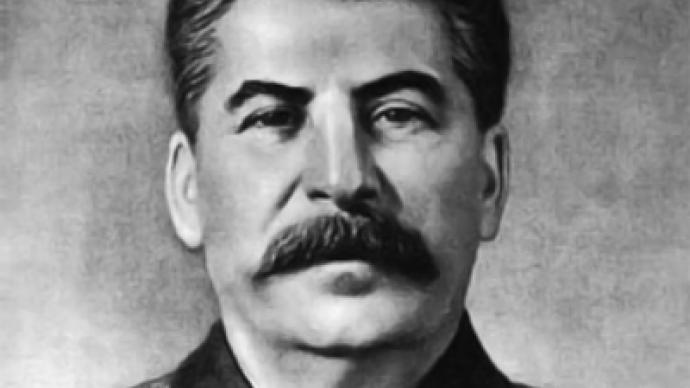World’s 10 most notorious tyrants

From the sexually extravagant Caligula to brutal defender of the French Revolution Robespierre to reformer-dictator Pinochet.
Caligula: “the pervert Caesar”
(Roman Emperor from 37 AD till 41 AD)
“Let them hate, so long as they fear,” was the motto of this leader of the Roman Empire, of whom his predecessor, Tiberius, once said that Caligula would become “a snake for the Roman people.” Indeed, Caligula’s cruelty, extravagance, and sexual perversity made many of his contemporaries regard him as an insane tyrant. Caligula was notorious for his sexual Bacchanalias and insatiable lust. He did not hesitate to take the women he wanted away from their husbands. Caligula is also believed to have committed incest with each of his three sisters, even prostituting them to other men.
Caligula’s ambitious construction projects, craving for luxury and unrestrained squander resulted in his losing the enormous imperial inheritance left by his predecessor Tiberius, and led to crippling taxes, frenzied price surges and veiled robbery. Moreover, Caligula declared himself a living god and even his horse Incitatus was called “an impersonation of all gods”. Incitatus was also a Senator, had a stable of marble with an ivory manger, purple blankets, a collar of precious stones, eighteen servants and was fed oats mixed with gold flake. Caligula’s policies led to numerous tensions and conspiracies, and after four years in power he was assassinated.
Genghis Khan: “the supreme warrior”
(Founder and ruler of the Mongol Empire from 1206 till 1227)
A Mongol legend says that Genghis Khan was born with a blood clot grasped in his fist – a sign that he was destined to become a great leader. The omen proved true, as the boy grew into the outstanding warrior of the 13th century who managed to forge the largest contiguous empire in history. Born Temujin, he experienced poverty, persecution and imprisonment after the death of his father, a tribal chief. But he rode the storm and his military genius helped him defeat rival tribes one by one. By 1206, he had become the ruler of almost all of Mongolia. It was then that Temujin was pronounced Genghis Khan – the king of kings.
Under his command, the Mongols swept through China, Central Asia and across Eastern Europe. By the time of Genghis Khan's death, his empire extended across Asia, from the Pacific Ocean to the Black Sea, and his descendants maintained power in the region for hundreds of years. Genghis Khan’s military conquests were often characterized by the utmost cruelty and wholesale slaughter of the defeated.
At the same time, he proved himself an admirable statesman, having managed to unite and organize the Mongols and introduce civilian and military codes. And though violations were severely punished, to the present day the Mongol people recognize Khan as a great reformer.
Henry VIII: “the Bluebeard king”
(King of England from 1509 till 1547)
The two things England’s Henry VIII is best known for his six marriages, which was a rather shocking number for a Christian king, and his English Reformation initiative. In the first years of his reign, Henry gained the sympathy of his people and was seen as a good Catholic. He even wrote the “Defense of the Seven Sacraments”, a book devoted to refuting Luther’s arguments, and for that he received the title from the Pope as the Defender of the Faith.
Nevertheless, when his personal wish to divorce his first wife collided with Rome’s stance, Henry VIII did not only separate the Church of England from papal authority and proclaim himself its Supreme Head, but also began disbanding Catholic monasteries and appropriating their income and assets. His wife Anne Boleyn, who became the driving force behind the church reform, was later executed, thus sharing the fate of Sir Thomas More and thousands of other opponents of Henry’s policies, either religious or civil, such as the forced enclosure of farm land.
The wheels of state were suppressing the people’s discontent by developing a spy network and increasing the number of executions. It is believed that more than 70,000 people were put to death during Henry VIII's rule, including two of his wives.
Ivan IV: “the Terrible”
(Tsar of All Russia from 1533 till 1584)
The first Grand Prince of Moscow to be given the title of “Tsar of Russia”, Ivan the Terrible showed signs of cruelty, deviousness and vengefulness since his childhood. The future tsar pronounced his first death sentence at the age of 13. The first part of his rule, though, was rather moderate – some believe due to the positive influence of his first wife, a kind and devout woman.
After her death, which Ivan believed to have resulted from poisoning, a sharp change in his rule began. Having introduced the so-called “Oprichnina” regime, Ivan IV started terrorizing the country. Under the pretext of fighting treason among the court nobility, he ordered the brutal killing of people without proving their guilt – often just for fun – sometimes together with their kin and familiars. Ivan the Terrible showed great imagination in sentencing people to the most painful kinds of death, including burning people at the stake, impaling and boiling to death. In addition, he was married seven (eight, according to other sources) times and is believed to have killed at least two of his wives, as well as his eldest son.
However, Ivan IV was one of the most educated people of his time and a talented conqueror. Under him, the territory of Russia expanded twofold.
Maximilien Robespierre: “the incorruptible face of the Reign of Terror”
(Considered to be de facto ruler of France from 1793 till 1794)
The life and death of Maximilien Robespierre, one of the most prominent and influential figures of the French Revolution, vividly demonstrates how a sincere intention to ensure the virtue and sovereignty of the people, carried out fanatically, turned out to be a terror for the nation. Robespierre welcomed the 1789 rebellion with open arms. Being one of the leaders of the Jacobins, he ultimately dominated the newly established Committee of Public Safety which, fearing the sabotage of the Revolution, began political and administrative purges and mass executions of “the Revolution’s enemies”. “The government in a revolution is the despotism of liberty against tyranny,” he used to say.
According to different estimates, from 16,000 to 40,000 people were killed during the Reign of Terror, including Robespierre’s former fellow-Jacobin, Georges Jacques Danton. As a result of Robespierre’s associating Terror with Virtue, the French Revolution became an endless bloodbath. In 1794 he was overthrown by a conspiracy of members of the Convention and executed.
Joseph Stalin: “the Father of Nations”
(General Secretary of the Soviet Union from 1922 till 1953)
A politician who walked over the dead bodies of both his associates and rivals on his way to power, Joseph Stalin was also a ruler who achieved an almost unprecedented economic miracle of modern times, having made a great industrial and military power out of a dilapidated and mostly agrarian country. “He found Russia working with wooden plows and left it equipped with atomic piles,” Sir Winston Churchill is believed to have said about him.
It was under Stalin that the Soviet Union won the Great Patriotic War against Nazi Germany in 1945, thus making USSR’s contribution to defeating the Axis in World War Two hard to overestimate. And it was under Stalin, as well, that the Soviet people suffered the hardly bearable strains of collectivization and industrialization, the mass famine of the 30s, the notorious Purges and the creation of the gulag system that, according to different estimates, 14 to 40 million Soviet citizens went through – with many not surviving.
Adolf Hitler: “the Fuhrer”
(Chancellor of Germany from 1933 till 1945)
The man who initiated the deadliest conflict in human history – World War II – actually started off as a spy. Following the ignominious defeat of Germany in World War I and the German 1918-1919 November revolution, Adolf Hitler's job was fishing for information on the activities of small political parties and groups. It was then that he tried becoming a speechmaker at a political gathering. He felt he was in his element and soon became leader of the National Socialist German Workers’ Party – the Nazis.
After assuming the position as Chancellor of Germany, Hitler suppressed the political opposition in the country, established the Gestapo – the secret state police, a system of concentration camps, and started mass Jew-baiting, which later grew into a genocide of the Jews throughout Europe. Hitler wiped out one-third of the Jewish population of the world, an event known as the Holocaust.
Democratic freedoms were, by that time, long gone in Germany. Planning to launch a large-scale aggression, Hitler initiated one of the largest economic and infrastructure development campaigns in the country’s history. By 1938, Hitler’s regime had occupied Austria and Czechoslovakia and, in 1939, by attacking Poland, he provoked the start of World War II which took the lives of over seventy million people, the majority of whom were civilians. After the defeat of Germany in 1945, Adolf Hitler committed suicide.
Augusto Pinochet: “the Reformer-Dictator”
(President of Chile from 1973 till 1990)
Military dictatorship and political repressions versus economic liberalization and reforms – that is the controversial legacy of the 16 years of Augusto Pinochet's rule in Chile. After the coup d'etat of September 11, 1973, he headed the junta that exercised executive and legislative functions of the government, and in 1974 was declared President. Ideologists of Pinochet's regime were saying that democracy is something Chile could not afford at the time. So, the system of representative democracy was annihilated and the National Congress dissolved.
Pinochet announced the country's communist party to be the junta’s most dangerous enemy and started suppressing his political opponents, exercising mass arrests, summary trials, systematic torture and “disappearances”, secret executions and detention. According to the Rettig Report, 2,279 people were killed for political reasons during the years of military rule under Augusto Pinochet. Later the Valech Report added that approximately 31,947 were tortured, and 1,312 exiled. The latter were chased all over the world by Pinochet's intelligence agencies while he was in power.
Pol Pot: “Brother Number One”
(Ruler of Democratic Kampuchea, now Cambodia, from 1975 till 1979)
Saloth Sar, aka Pol Pot was an unusual dictator who had neither a personality cult nor was appropriating the assets of his persecuted opponents. Instead, he focused on destroying his own people. During the four years of the Khmer Rouge party regime in Democratic Kampuchea, about three million people – a fourth part of the country's population – were brutally wiped out.
Pol Pot imposed a version of agrarian collectivization, forcing city dwellers to relocate to the countryside to work at collective farms and forced labor projects. The Khmer Rouge targeted everyone considered “potentially dangerous”, which included the military, specialists of all kinds, including teachers and doctors, officials and educated people in general. Both education and religion were abolished. Schools were turned into prisons or sites for torture, which was widespread. Beating people to death with iron bars and hoes, running them over with bulldozers, burning or burying them alive, drowning and throwing to crocodiles were all popular with Pol Pot. Hundreds of thousands of Cambodian people dug their own mass graves, which are now referred to as The Killing Fields.
Kim Jong Il: “the Dear Leader”
(Supreme Commander of the Korean People’s Army from 1991 till present)
According to human rights organizations, Kim Jong Il, son of the “Eternal President” Kim Il-sung, runs the world’s most tightly controlled society. The Democratic People’s Republic of Korea has been receiving the worst possible score, for the 34th straight year, on political rights and civil liberties from Freedom House. The people of North Korea have no right to leave the country or freely move inside it and, thus, most information learned about it comes from escapees.
The UN resolution on human rights abuses in North Korea says the country practices torture, public executions, imposition of the death penalty for political reasons, as well as possessing a large number of prison camps and extensive use of forced labor, trafficking of women for prostitution and infanticide of children of repatriated mothers, and other sanctions on those repatriated from abroad. That is, however, not even scratching the surface of North Korea’s atrocities. At the moment an estimated 250,000 people are confined in “reeducation camps”. Furthermore, the early years of Kim Jong Il’s reign were marred by a three-year famine which, according to different estimates, killed from 250,000 to three million citizens, and the humanitarian situation in the country remains precarious.














